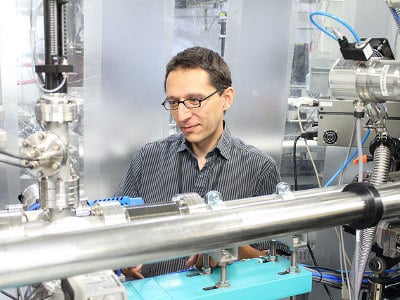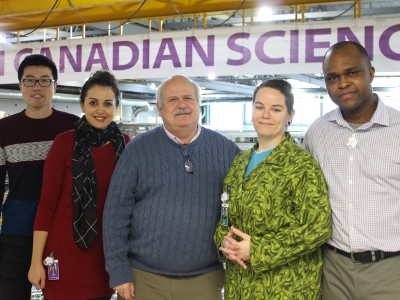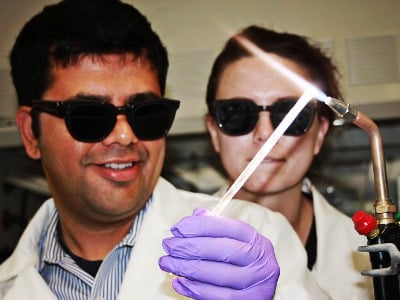

The Canadian Light Source, a football-field sized synchrotron facility located underground at the University of Saskatchewan campus in Saskatoon, has been shedding some interesting light on the behaviour of materials that may radically change how we build electronics in the near future.
While cutting edge research elsewhere is being done into “quantum computing” and the possibilities expand for wearable electronics and paper-thin computers, there has been no fundamental change for several decades in the actual structure of electronics materials that we use for day-to-day computing.
This may be about to change, owing to research conducted at the prairie synchrotron.
The research, which involves the measurement and observation of the behaviours of nanometer-thick layers of materials, has been a collaboration between researchers from the University of British Columbia, the Max Planck Institute for Solid State Research, the University of Würzberg, the Liebniz Institute IFW, McMaster University, the University of California and the CLS.
“We have been working on this project for several years, but the results are worth all the effort,” said lead investigator Prof. Vladimir Hinkov, from the Physics Institute and Röntgen Center at the University of Würzburg in Germany.
Until now, observing the behaviour of conventional electronics materials has been difficult or impossible because existing instruments are either too coarse to measure them at the atomic level or because the materials are destroyed during the observation process.
This new non-destructive X-ray technique made possible by the team working at the Canadian Light Source has finally solved a mystery as to how these materials behave and how it might be possible to revolutionize their usage.
Researchers have never properly understood why, for example, the interaction between two insulators can inexplicably become superconducting, or how a strong magnetic order can build up between non-magnetic layers.
But they can now observe these phenomena at the atomic level and understand precisely how they work, which has implications for how we build electronics in the decades to come.
“We will investigate structures with interesting magnetic and electronic properties, and in the near future, colleagues who focus on electronics applications can use our results to develop components with tailored physical and technological properties,” said Professor Hinkov. “An endeavour of this magnitude is only possible if colleagues with diverse fields of research are involved. Also, the required light has to be intense and of high quality, which can only be created in a synchrotron such as the Canadian Light Source.”
Between this work and also experiments being conducted into the use of the revolutionary material graphene, the Canadian Light Source stands to drastically alter how we think about electronics, computers and technology in our everyday lives.
Leave a Reply
You must be logged in to post a comment.






 Share
Share Tweet
Tweet Share
Share




Comment